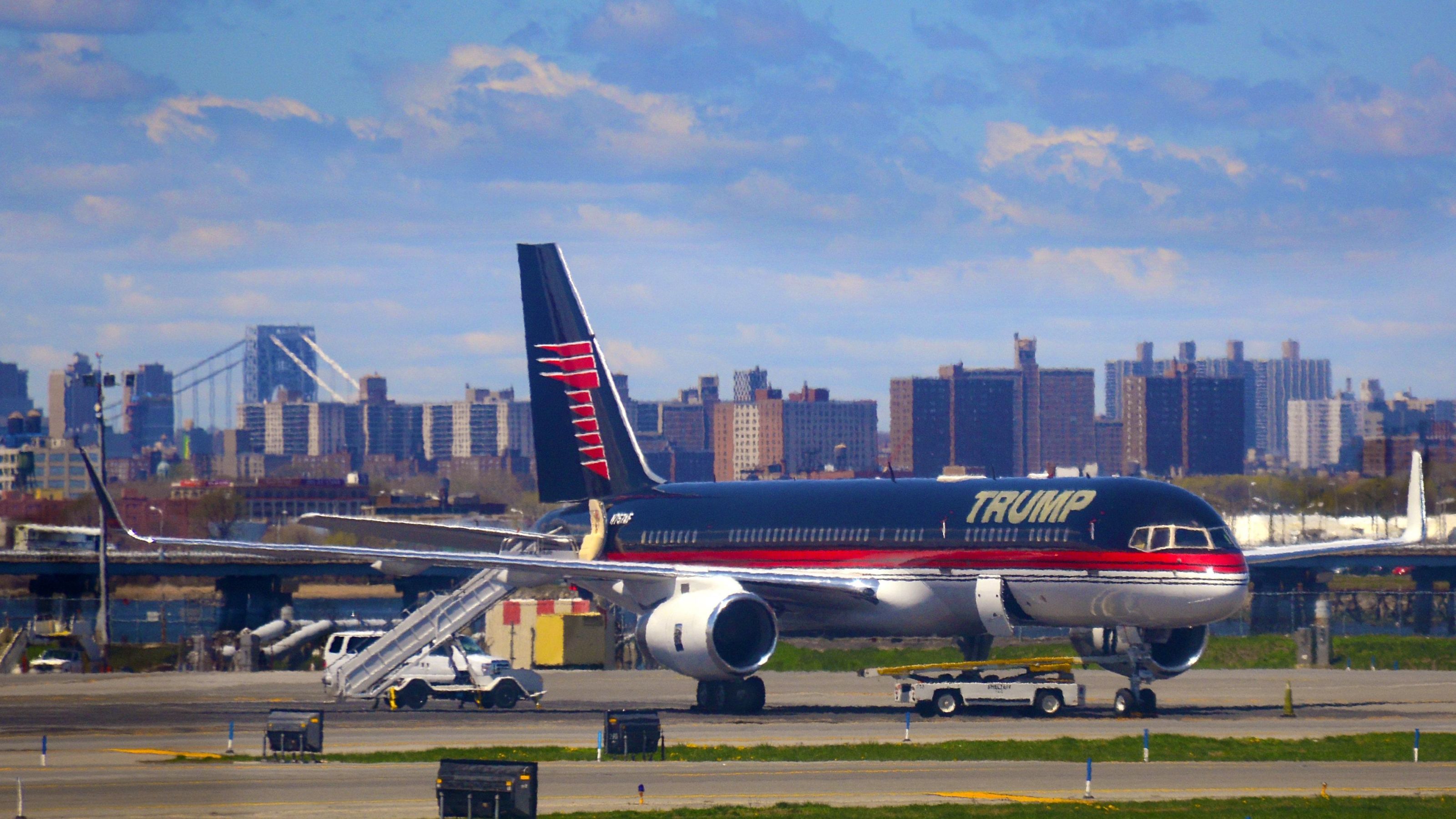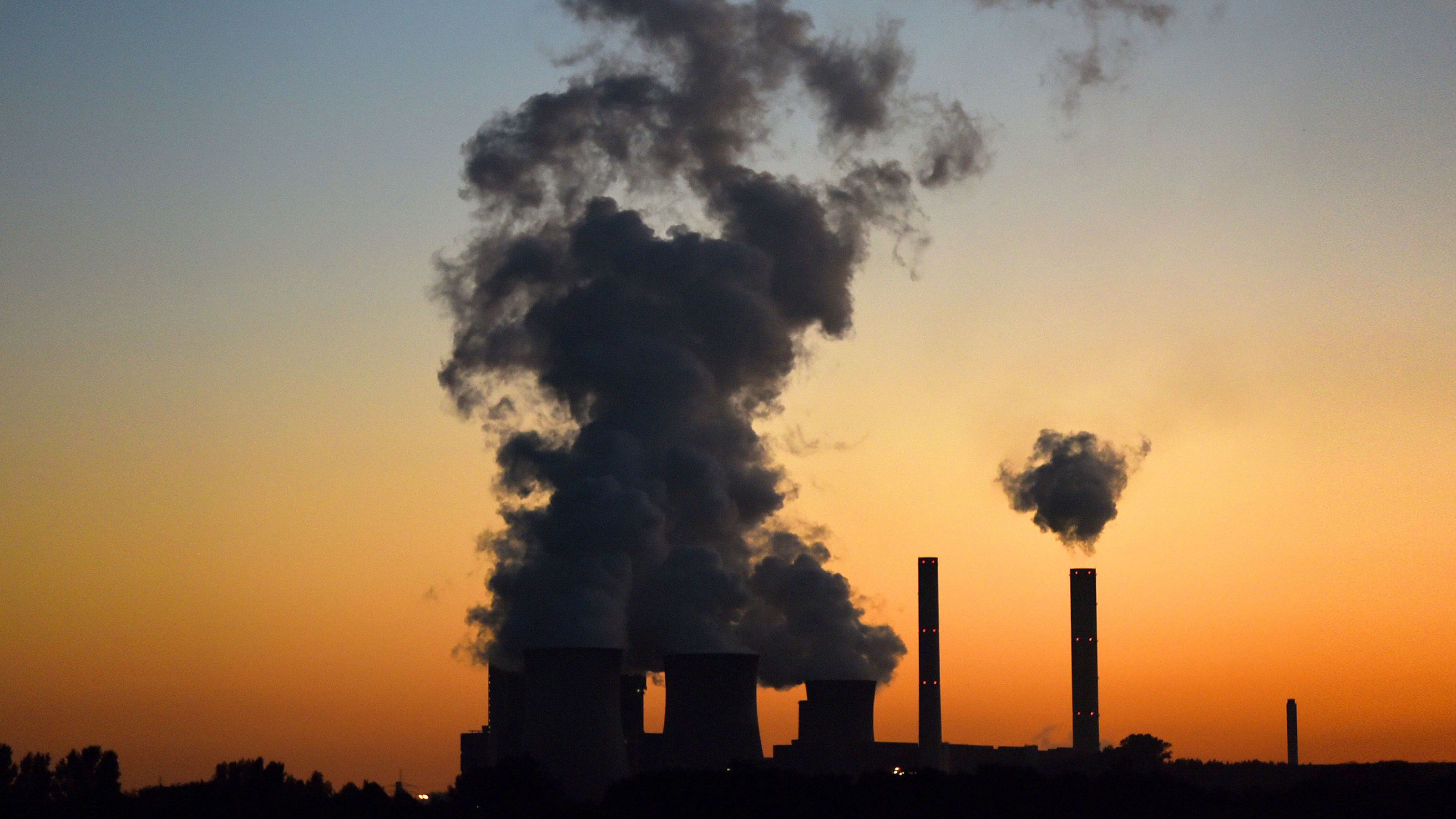Calculating Donald Trump's Personal Impact on the Environment
The White House has declared this "Energy Week"—so we spent ours analyzing the president's climate impact.


You know what they say: small hands, huge carbon footprint. Or perhaps they should. President Donald Trump isn't just enacting policies that will almost certainly negatively impact the planet, but his personal choices prove to be wildly anti-environmental too. Climate scientists say his private planes, sprawling mansions, luxury golf courses, and preference for well-done steaks amount to a carbon footprint that dwarfs that of most Americans, adding insult to injury for citizens reeling after Trump's withdrawal from the Paris Accord.
Everyone has their own carbon footprint, an approximation of the carbon dioxide their lifestyle produces. The more carbon dioxide in the atmosphere, the less heat can escape into space, and the higher the average global temperature, which leads to rising sea levels, more droughts, and more intense hurricanes, among other consequences. Americans emit, on average, 20 tons each of carbon dioxide a year, nearly five times the worldwide average. People who drive cars have a higher footprint than those who take public transit; those who own six luxury residences emit more than those who live in just one.
"Trump will go down as the person responsible for the most carbon emissions in the world," says Aaron Huertas, founder of Science Communication Media, where he consults with local and state officials on planning for sea-level rise. Here, the reasons why:
1. His Private Flying (and Frequent Jaunts to Mar-a-Lago) Add Up to Tens of Thousands of Tons of CO2 Emissions

Trump's choice to use his 757 (dubbed "Trump Force One") on the campaign trail was incredibly costly from a carbon POV. His campaign flights alone were equal to 500 Americans' entire year's worth of carbon emissions, according to data from Bloomberg News. But Trump was a major traveler before he set out to claim the Oval Office. Richard Heede, the co-founder and director of the Climate Accountability Institute, estimates that Trump's Boeing 757 emits roughly 26 tons of CO2 per 1,000-mile trip. With more than 500,000 miles documented on this plane and his lower fuel-consuming Cessna jet between 2011 and April 2015, Trump would have produced more than 12,000 tons of CO2 emissions.
But presidents need to travel, and Air Force One is going to ratchet up climate emissions no matter whether a Democrat or Republican is sitting in the cabin. One option, says Brenda Ekwurzel, co-author of Cooler, Smarter, Practical Steps for Low Carbon Living, would be to make sure the plane is equipped with better fuel emission standards. Trump's decision to forgo a new Air Force One could delay improvement in his and future presidents' climate footprint, she adds.
Since his inauguration, Trump has also taken numerous personal trips by plane. He's flown to Palm Beach compound Mar-a-Lago seven times. He's visited New York City—where his wife and youngest son lived until recently—and Bedminster, NJ, where he owns a golf club. Just yesterday, two House democrats introduced a bill requiring the cost of those trips on Air Force One to be released—though they were talking financial cost, not environmental.
2. He Owns Six Homes—None of Which He's Currently Living In And One of Which May Emit As Much As 14 Times More Carbon Than Average
RELATED STORIES


Aside from the abode he's currently occupying at 1600 Pennsylvania Avenue, Trump owns multiple luxury residences: a sprawling six-bedroom mansion in Beverly Hills, a 23,000-square-foot mansion on a 2,000-acre winery, and his gilded New York City penthouse in Trump Tower among them. Size, energy use, number of occupants, and types of refrigerants all go into calculating a home's carbon footprint. Even if Trump recently upgraded all his gold-plated appliances, the scant number of residents in each oversized dwelling would make the individual carbon footprint drastically higher than that of most of his constituents, considering that the median home size in in the U.S. is less than 2,500 square feet.
Get exclusive access to fashion and beauty trends, hot-off-the-press celebrity news, and more.
Heede estimates that Trump's Manhattan apartment, which property records show is 10,996 square-feet though the president has claimed it's 33,000 square feet, produces 31 to 38 tons of CO2 per year. For Mar-a-Lago, he calculated an estimated carbon dioxide production of 157 to 188 tons annually, assuming that Trump's personal residence takes up somewhere between 25 and 40 percent of the 128-room mansion.
By way of comparison, Heede points out that the average U.S. single-family house produces approximately just 13 tons of CO2 per year.
3. His Love of Steak Alone May Contribute 7 Kilograms of CO2 to the Atmosphere Per Day
Excessive meat eating is another common environmental demon: Livestock farming produces anywhere from 20 percent, per a U.N. report, to 50 percent, according to worldwatch.org, of all man-made greenhouse gas emissions. A meat lover's carbon footprint is nearly twice that of someone on a vegetarian or vegan diet. And fast food—some of Trump's professed favorite meals—are among the worst global carbon footprint offenders.
4. His Favorite Hobby, Golf, Is Reducing Our Water Supply by 2 Billion Gallons Per Day

Trump's hobbies aren't helping. Golf courses—Trump owns 17 and has played the sport at least 24 times since taking office—carry a high carbon footprint. Though many clubs are taking proactive steps to lessen environmental degradation, the grounds require a lot of chemical inputs, energy, and water to maintain, says John Rogers, senior energy analyst at Union of Concerned Scientists and Ekwurzel's co-author. Simply mowing the course for one hour produces as much greenhouse gas as driving a car 350 miles. Golf courses also have a high land-use cost, especially if the location was once forest. "Grass is not a great carbon sink [an environment that absorbs the gas from the atmosphere] the way trees are," Rogers explains.
Still, Trump's personal habits are peanuts compared to the havoc his policies will wreak. "Fighting climate change can't just be a matter of personal virtue," argues Ekwurzel. "It doesn't matter what steps you, or I, or President Trump might take to reduce our own climate impact, if he's undercutting America's climate policies and limiting the low-carbon choices we can make."
Ekwurzel cites meaningful steps the president could take: promoting a cleaner electrical grid, cleaner cars that use less oil, more efficient buildings and appliances, and more investment in renewable energy sources. Trump would also do well to consider amending his budget, which includes a 64- to 80-percent cut to Smart Grid Research and Development at the Department of Energy and nearly the same cut to Energy Efficiency programs.
"No one person can do it alone, not even the President," says Ekwurzel. "But we need leadership from the top if we're going to reduce the risk of climate change."
Follow Marie Claire on Facebook for the latest news, fascinating reads, video, and more.
Rebecca Gale is an award-winning journalist covering the nexus of politics and people in Washington, D.C. She is currently a writer with the Better Life Lab at New America. Her work has appeared in The Washington Post, Roll Call, Marie Claire, Cosmopolitan, and Health Affairs, among other outlets. Follow her on Twitter @beckgale
